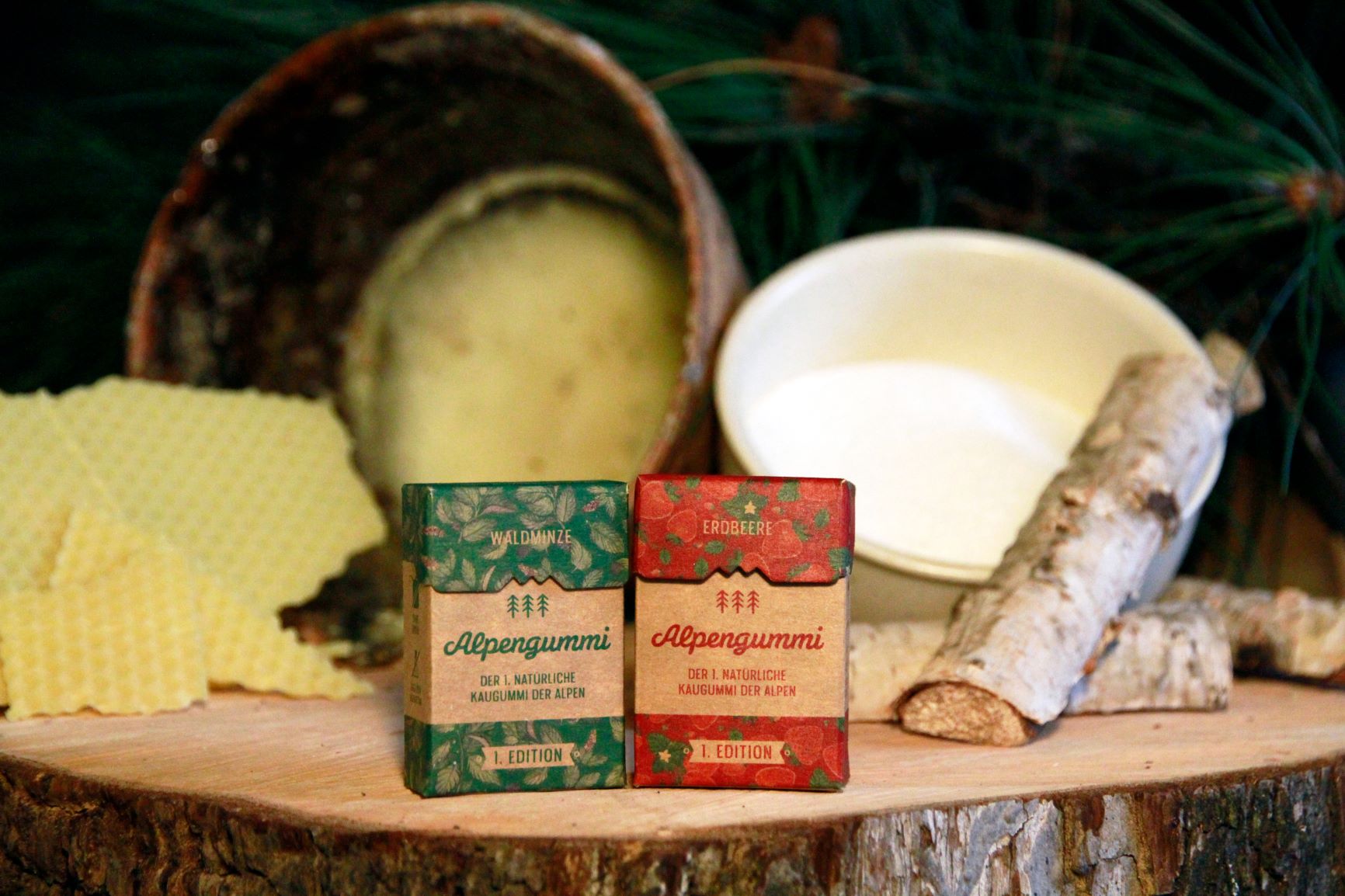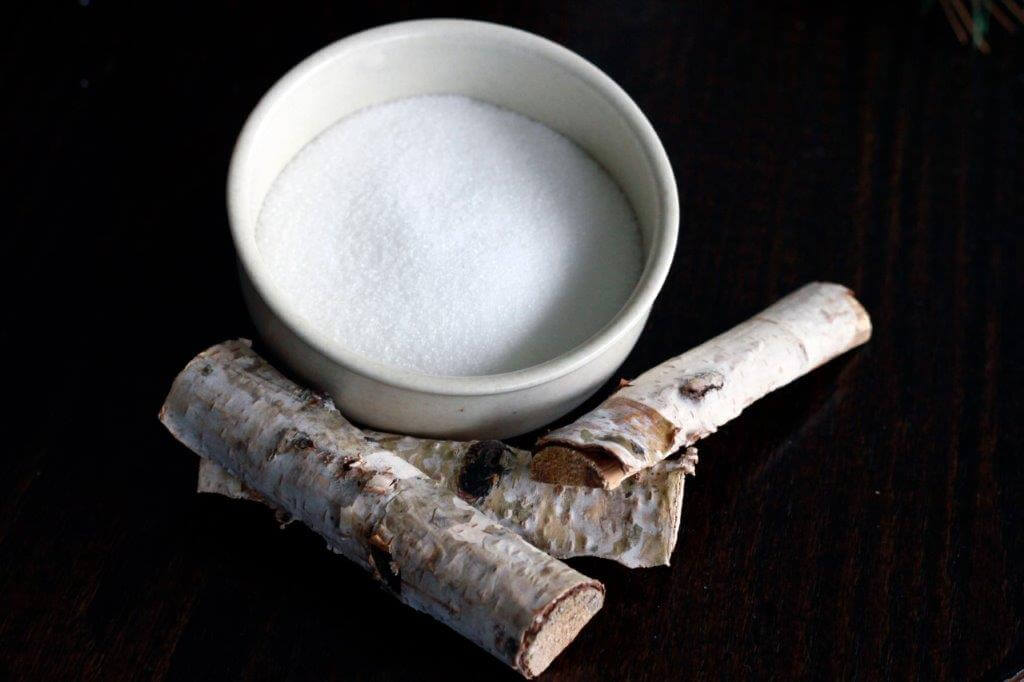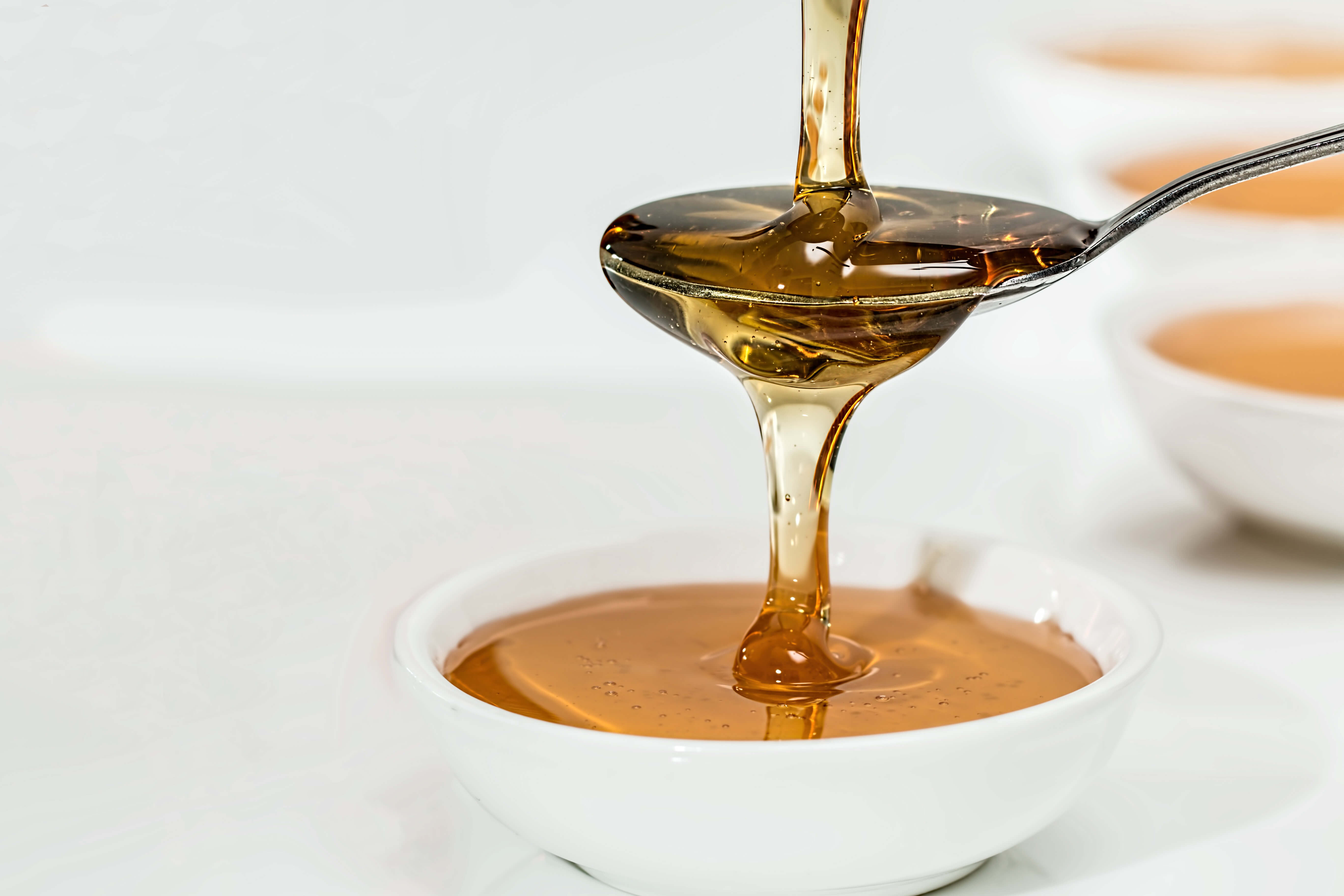
Sustainability: For us this is more than just a slogan!
We did not found Alpengummi to launch another chewing gum on the market. Find out more about our motives, our choice of ingredients and what we mean by sustainability.
You’d think we were born as passionate chewing gum chewers. If adults had asked us as children what we wanted to be when we grew up, we wouldn’t have answered “Firewoman!” or “Princess!”, but “Chewing Gum Producer!”. - That’s not true, of course. Rather, we discovered during our studies of environmental sciences that there is a problem with a product that one in three people regularly put in their mouths: chewing gum. This is because they are largely made of plastics and also contain ingredients that are potentially harmful to our health!
Sustainability is very important to us. We are convinced that we must all be careful with the resources that our planet provides us with. Meanwhile, we have already reached the so-called “Earth Overshoot Day” in July. This means that by the middle of the year, we have already used up all the natural resources available to us, which should actually still be sufficient until the end of the year.
As a manufacturing company, we therefore have a responsibility - this is particularly evident in the selection of raw materials for our product.
We strive to find a sustainable balance between quality, origin and price. Therefore the selection of the optimal raw materials is not always easy for us. How exactly we make these decisions, we would like to explain to you here:
Fact-Check: Gum base
Resin is the main component of the gum base for our Alpengummi © Bergfalke GmbH
We have already explained here that chewing gums are made of plastics. As we all know, fossil raw materials are non-renewable and do not degrade at the end of their life cycle, which leads to pollution of cities and the environment. Long transport routes and high energy consumption are also associated with extraction and processing. Unfortunately, chewing gums are often spat out on the asphalt, from where they can be discharged into the sea via waste water. When large plastic decomposes into small ones, microplastic is created. And when a fish in the sea feeds on it and you buy this fish in the supermarket, you are chewing your chewing gum again - how great!^^ ;-)
So we have invented a new, natural chewing gum base - the second besides “chicle” - made of local tree resin and beeswax. The consistency is not so gummy, but our chewing gum has a natural taste that lasts forever - with a certain woody note. The tree resin is obtained in Lower Austria in the process of an old traditional craft, that has become part of the UNESCO Intangible Cultural Heritage in 2011.
Fact-Check: Essential oils vs. natural flavours
 pixabay-2.jpg)
Mint oil © Pixabay
It was clear to us from the very beginning that all ingredients had to be extracted as sustainably as possible and transport routes had to be kept as short as possible. Therefore, we had considered using essential oils to add flavour to the chewing gum. We experimented a lot with these in the beginning, but soon we learned that not everything is as bloomy as it looks: Most manufacturers source the plants for their essential oils from overseas. So it was practically impossible to get a mint oil for our usage that is not grown in India. It is not possible at present to obtain essential oils from domestic plants in quantities that would be profitable for chewing gum production. By the way, this is also a question of price: Essential oils are much more expensive, which would also affect the final price of the chewing gum. For these reasons we have decided to use natural flavours.
Fact-Check: Animal vs. vegetable wax
 Pixabay-2.jpg)
Brazilian carnauba wax and austrian beeswax © Pixabay
We use beeswax to make our Alpengummis softer. Conventional - but also many natural chicle chewing gums use carnauba wax for the shiny layer. Carnauba wax is vegan - in contrast to our animal-based beeswax - but is extracted from a palm tree in Brazil (hence the name “brazilian wax”). Not only is this extraction connected with the clearing of rainforests, but also with inhumane working conditions. Learn more about this here.
Fact-Check: Organic vs. regional & conventional
Xylitol

Toothcleaning birch sugar (xylitol) from birch bark © Bergfalke GmbH
Perhaps you have already asked yourselves why our chewing gum does not have an organic certification? Mostly because of our sweetener: xylitol.
Xylitol - also known as birch sugar - is produced from plant fibres by hydrogenation. The resulting wood sugar (xylose) is then processed into xylitol. The bark from which the birch sugar for our chewing gum is made, comes from Austrian and Finnish deciduous trees from sustainable forestry. The bark is a by-product of the wood processing, i.e. no trees are felled for our xylitol - even better: 100% of the raw material is used.
Xylitol is available as a mono-product in organic quality, but as soon as xylitol is used for a product (in our case simply added to), you can no longer get an organic seal according to EU legislation. As it was more important to us in the selection of raw materials to produce a tooth-friendly chewing gum, we therefore decided against caries-promoting sugars, which would however be bio-certifiable.
Glycerine
.jpg)
Plant-based glycerine © Bergfalke GmbH
Glycerine serves as a moisturizer in our chewing gum. Normally, conventional glycerine is largely a synthetic product obtained from propene (petroleum product). However, we have made a conscious decision to use plant-based glycerine, which is produced by the splitting of vegetable fats.
At present, glycerine is available as “organic”, i.e. certified according to the National Organic Program (NOP certified), but it is not really recognized in the EU (as far as we understand). Unfortunately, the origin of these organic glycerines is in India, so we have decided not to use it.
Lecithine
-2.jpg)
Sunflower is the source for our lecithin © Pixabay
Lecithin serves as an emulsifier in our gum base. Our lecithin is obtained in Italy from sunflowers and is bio-certified.
Gum arabic
 Pixabay-2.jpg)
Gum arabic © Pixabay
Acacia gum (gum arabic) stabilises our chewing gum and contributes to a more pleasant chewing feeling. Gum arabic is also a tree resin, which is mostly extracted in Africa. It is also an important part of the livelihood for the rural population there - just like the black pine resin for our Lower Austrian pitchers.
This ingredient is in fact the most widely travelled ingredient for our chewing gum, which is why we only add it in very small quantities. However, we are still working on our recipe and hope to find a regional substitute for this stabiliser in the near future (at this point we would like to mention that we are working with universities and research institutes - this topic could well be a future field of research!)
Tocopheroles/Vitamin E

Vitamin E © Pixabay
The fat-soluble vitamin E is contained in many nuts and therefore also oils and is considered an antioxidant and catcher of cell-damaging free radicals. To ensure that our product has a longer shelf life, we use a mixture of natural tocopherols derived from sunflowers.
It is not always easy to find the right balance between quality (optimal taste & chewing experience), origin/regionality and price. With this blog article we wanted to show you that we do our best, take every decision very carefully and that transparency is important to us. If you have any further questions, suggestions for improvement or other ideas, please feel free to write to info@alpengummi.at :)

